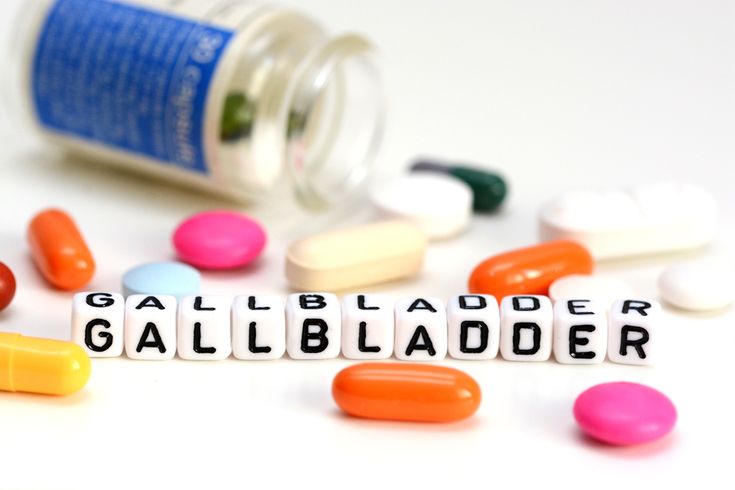Introduction
Gallbladder disease is one of the most prevalent health issues among millions of individuals globally. It comprises several disorders that affect the gallbladder, including gallstones, inflammation, and infection. The gallbladder is a small organ that lies below the liver, storing bile, which aids digestion. When the gallbladder is not functioning properly, it causes severe pain, digestive issues, and other issues.
Here, we will talk about the causes, symptoms, diagnosis, and treatment of gallbladder disease. Here, you will also know how to avoid gallbladder problems through appropriate diet and lifestyle modifications.

What is gallbladder disease?
Gallbladder disease is any condition that disrupts the functioning of the gallbladder. It happens when the gallbladder forms stones, infection, or inflammation that impedes it from functioning normally. Gallbladder disease is either acute (temporary) or chronic (permanent).
Types of Gallbladder Disease
There are various conditions classified under gallbladder disease. The most frequent among them are:
Gallstones (Cholelithiasis): Solidified collections of bile formed in the gallbladder.
Cholecystitis: Inflammation of the gallbladder, generally caused by the obstruction of bile ducts due to gallstones.
Biliary Dyskinesia: An abnormality wherein the gallbladder fails to empty bile.
Choledocholithiasis: Stones that migrate to the bile ducts and become obstructions.
Gallbladder Cancer: An uncommon but serious illness that begins in the gallbladder.
Causes of Gallbladder Disease
It may arise as a result of several factors, such as:
Gallstones: They are the most frequent cause of gallbladder disease. They occur when cholesterol, bile salts, and other substances become hardened within the gallbladder.
Obesity: Being overweight raises cholesterol levels in bile, causing gallstones to form.
Poor Diet: A diet rich in fats and processed foods, and low in fiber may raise the risk.
Rapid Weight Loss: Weight loss that is too rapid can upset bile balance and cause gallstones.
Hormonal Changes: Pregnancy, birth control pills, and hormone therapy increase the risk.
Diabetes: Individuals with diabetes are at higher risk because there are imbalances in bile composition.
Family History: Heredity plays a factor in the risk of developing gallbladder issues.
Symptoms
Symptoms of gallbladder disease depend on the condition but include:
Common Symptoms:
- Severe pain in the middle or upper right abdomen
- Nausea and vomiting
- Indigestion and bloating
- Pain radiating to the back or right shoulder
- Fever and chills (in infections)
- Jaundice (yellowing of the skin and eyes due to bile duct obstruction)
-
Symptoms Based on Condition:
Gallstones: Most individuals do not have symptoms unless the stones obstruct the bile duct.
Cholecystitis: Sudden, severe pain accompanied by fever and nausea.
Biliary Dyskinesia: Nausea, indigestion, and pain after meals containing fatty foods.
If you have severe abdominal pain lasting several hours, get immediate medical help.
How is it diagnosed?
Physicians utilize several tests to diagnose gallbladder disease, including:
Ultrasound: The most frequent test to identify gallstones and inflammation.
Blood Tests: To assess for infection, liver function, and inflammatory markers.
CT Scan or MRI: Offers detailed pictures of the gallbladder and bile ducts.
HIDA Scan (Cholescintigraphy): Tests gallbladder function and detects obstruction.
Endoscopic Retrograde Cholangiopancreatography (ERCP): Detects blockage in bile ducts and extracts gallstones if required.
Treatment of Gallbladder Disease
The treatment of gallbladder disease is based on the severity and type of the condition.
Non-Surgical Treatment:
Dietary Changes: Following a low-fat, high-fiber diet can decrease symptoms.
Medications: Certain drugs are able to dissolve gallstones, but their success is not guaranteed.
Pain Management: Pain relievers taken over-the-counter or on prescription can provide relief.
Surgical Treatment:
Gallbladder Removal (Cholecystectomy): In case of severe or repeated gallbladder disease, surgeons can advise the removal of the gallbladder.
The operation is referred to as cholecystectomy, and it is performed in two methods:
Laparoscopic Cholecystectomy: A small incision minimally invasive surgery. It involves a quicker recovery.
Open cholecystectomy: A larger incision traditional surgery. It is necessary in complex situations.
After gallbladder removal, the liver continues to produce bile, and most people can live a normal life without a gallbladder. https://theechowriters.com/category/health-and-fitness/
How to Prevent Gallbladder Disease?
You may lower your chance of gallbladder disease through these easy changes in lifestyle:
1. Have a Healthy Diet
- Boost fiber from fruits, veggies, and whole grains.
- Cut back on saturated fat from fried food and processed items.
- Drink enough water to have regular digestion.
2. Be Healthy Weight
- Do not go on a crash diet or lose weight abruptly.
- Exercise daily to maintain balanced cholesterol levels.
3. Control Medical Conditions
- Regulate diabetes and cholesterol.
- Eat a balanced diet to avoid bile imbalance.
-
Conclusion
Gallbladder disease is a preventable but prevalent disease that impacts digestion and overall wellness. Knowing the causes, signs, and remedies can assist you in taking actions to control and avoid complications. https://my.clevelandclinic.org/health/diseases/22976-gallbladder-disease If you find yourself with recurrent abdominal pain, digestive issues, or other issues, seek advice from a doctor for early intervention and treatment.
By choosing healthy lifestyle habits and following a balanced diet, you can keep your gallbladder in good health and steer clear of serious complications.
Want more advice on how to maintain digestive health? Let us know in the comments!

